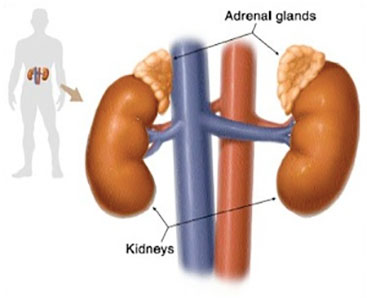
The adrenal glands are paired glands that sit on top of the kidneys in the posterior upper abdomen. Each gland has an inner part (the medulla) and an outer portion (the cortex). The medulla makes epinephrine (adrenalin) and norepinephrine, which mediate the body’s “flight or fight” response. These hormones increase heart rate and blood pressure. The cortex makes several related hormones (adrenal steroids) that influence a variety body processes including energy regulation, immunity and inflammation and fluid and salt balance. The adrenal cortex also produces a small amount of male and female hormones.
A variety of disease processes can, directly or indirectly, involve the adrenal glands. A complete discussion of these issues is beyond the scope of our website. We will focus on surgical diseases of the adrenal gland. The adrenal gland can develop both benign and malignant growths, starting in either the adrenal medulla or the adrenal cortex. If the growths secrets a hormone, they are called functioning tumors. If no hormone is secreted they are considered non-functioning tumors. Benign tumors may be functional or non-functional and malignant tumors may be functional or non-functional The adrenal gland can be a frequent sight of metastatic disease from cancer that starts in other areas of the body, and on occasion this may be surgically relevant. We will discuss the most important benign and malignant tumors of the adrenal glands, any functional syndromes that occur with them,and their evaluation and treatment. Six general categories will be discussed.
